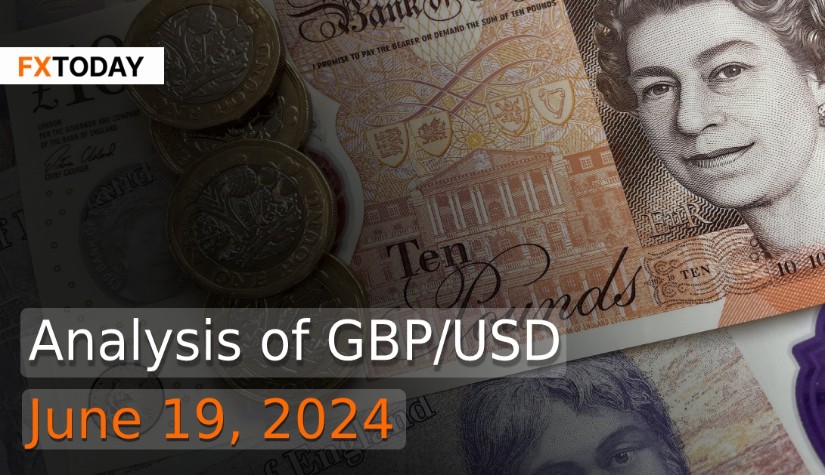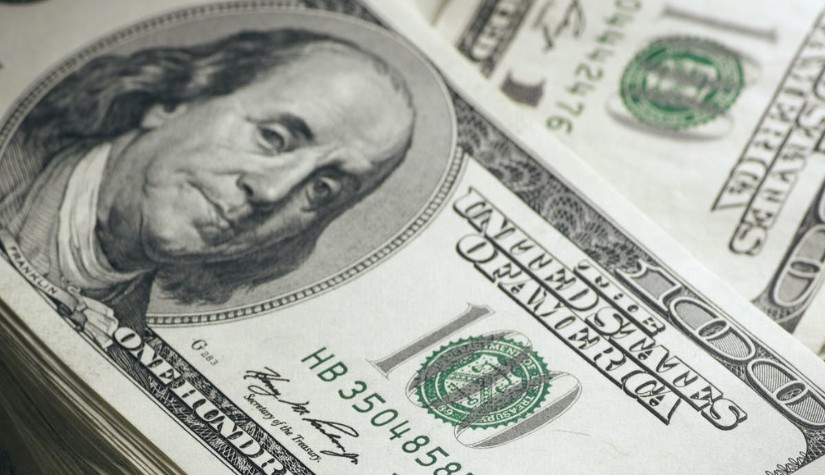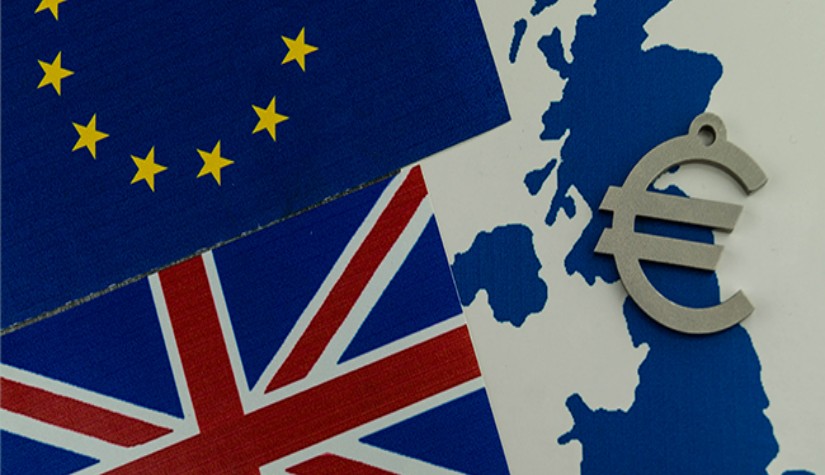BoE Rate Decision Looms as Sterling Holds Steady Amid Election and Inflation Concerns
Sterling remained steady as investors awaited inflation data due on Wednesday and the Bank of England's (BoE) interest rate decision on Thursday. Prime Minister Rishi Sunak's hopes for a pre-election interest rate cut are likely to be disappointed, as the BoE is expected to signal that any reduction in borrowing costs will be for the next government.
The BoE has been gradually moving towards its first rate cut since the COVID-19 pandemic began, encouraging Sunak to reassure voters that relief from the cost-of-living crisis is imminent. However, high inflation is expected to prevent a rate cut at the June 20 meeting, the last before the election. A Reuters poll indicated that 63 of 65 economists do not anticipate a rate cut until August 1.
As the UK nears a general election, it faces a challenging fiscal environment. Both major parties are committed to reducing debt as a percentage of output over five years, necessitating significant fiscal consolidation. Goldman Sachs analysts, in a note dated June 10, suggest that while the UK has a strong history of fiscal consolidation, the pace may be slower than planned due to high tax burdens and pressures on the health budget. Even if the planned consolidation is achieved, external shocks could hinder the sustainability of the debt-to-GDP ratio.
Economic growth in the UK stalled in April due to wet weather, following a strong start to 2024. The Office for National Statistics reported that GDP was flat in April, matching economists' expectations, after a 0.4% rise in March. This stagnation followed labour market data showing declining employment, rising unemployment, and strong wage growth. April's growth was driven solely by the services sector, particularly in information, technology, and professional services, while manufacturing and construction output fell more than anticipated.
Wage growth in Britain edged higher in the three months to May, contributing to inflation pressure. Most Bank of England policymakers seek wage growth to fall back to the 3-4% range from its current 6% before considering interest rate cuts. An April BoE survey projected a 4.6% pay growth for the coming year.
The housing market lost momentum as expectations of imminent BoE rate cuts diminished. This led to a decline in buyer demand and house prices, with average asking prices for homes remaining flat. Affordability remains a significant political issue with house prices having increased by about 20% since the last election in December 2019.
UK grocery inflation fell for the sixteenth consecutive month in June, providing a small boost for Prime Minister Rishi Sunak ahead of the upcoming election. Official data from May 22 indicated that overall consumer price inflation dropped to 2.3% over the year leading up to April. Data for May's inflation will be released on Wednesday, followed by the Bank of England's policy announcement on Thursday.
The U.S. dollar experienced losses on Wednesday after weak U.S. retail sales data, indicating sluggish economic activity in the second quarter, bolstered expectations of Federal Reserve rate cuts.
U.S. retail sales growth for May was lower than expected due to declining gasoline and vehicle prices. This modest increase in retail sales suggested that consumer spending was under strain despite easing inflation. Higher prices and interest rates have led consumers to focus on essentials, reducing discretionary spending. Analysts believe this supports the likelihood of the Federal Reserve cutting interest rates, potentially as early as September, though some officials anticipate a delay until December.
In May, U.S. factory production rose more than expected, recovering from declines in the previous two months. However, this growth is not expected to last due to higher interest rates and decreasing demand for goods. Manufacturing, which constitutes 10.4% of the U.S. economy, is facing challenges from increased borrowing costs. According to a recent Institute for Supply Management survey, companies are hesitant to invest due to current monetary policies and other conditions, affecting supplier orders, inventory building, and capital expenditures.
The U.S. budget deficit is projected to rise to $1.915 trillion in fiscal 2024, up from $1.695 trillion last year, making it the largest deficit outside the COVID-19 era, as reported by the Congressional Budget Office (CBO). Increased spending, including $1.6 trillion from recent legislative changes and supplemental funding for Ukraine, Israel, and the Indo-Pacific region, is a key factor. Although a stronger economic outlook has reduced long-term deficits by $600 billion, this is offset by a $1.1 trillion increase due to technical revisions in debt interest and healthcare costs. The CBO anticipates net interest costs to reach $1.7 trillion by 2034.
The CBO also predicts a lower unemployment rate of 3.9% for 2024, down from the previous estimate of 4.2%, and no Federal Reserve rate cuts this year. A significant contributor to economic improvement is a surge in immigration, which is expected to add 8.7 million U.S. residents from 2021 to 2026, potentially increasing GDP by $8.9 trillion, or 2.4%, over the next decade.
Philadelphia Fed President Patrick Harker indicated support for only one interest rate cut this year, but remains open to adjusting his stance based on new data. Other Fed officials, including Boston Fed's Susan Collins and Richmond Fed's Thomas Barkin, are scheduled to speak. Therefore, the GBP/USD currency pair may fluctuate within the current range continuously during this period. Increased volatility is likely before and after the UK elections.
Data for Technical Analysis (1H) CFD GBP/USD
Resistance : 1.2713, 1.2714, 1.2716
Support : 1.2709, 1.2708, 1.2706
1H Outlook
Source: TradingView
Buy/Long 1 If the support at the price range 1.2704 - 1.2709 is touched, but the support at 1.2709 cannot be broken, the TP may be set around 1.2713 and the SL around 1.2701, or up to the risk appetite.
Buy/Long 2 If the resistance can be broken at the price range of 1.2713 - 1.2718, TP may be set around 1.2721 and SL around 1.2706, or up to the risk appetite.
Sell/Short 1 If the resistance at the price range 1.2713 - 1.2718 is touched, but the resistance 1.2708 cannot be broken, the TP may be set around 1.2713 and the SL around 1.2721, or up to the risk appetite.
Sell/Short 2 If the support can be broken at the price range of 1.2704 - 1.2709, TP may be set around 1.2700 and SL around 1.2716, or up to the risk appetite.
Pivot Points Jun 19, 2024 03:16AM GMT
|
Name
|
S3
|
S2
|
S1
|
Pivot Points
|
R1
|
R2
|
R3
|
|---|---|---|---|---|---|---|---|
| Classic | 1.2703 | 1.2706 | 1.2708 | 1.2711 | 1.2713 | 1.2716 | 1.2718 |
| Fibonacci | 1.2706 | 1.2708 | 1.2709 | 1.2711 | 1.2713 | 1.2714 | 1.2716 |
| Camarilla | 1.271 | 1.271 | 1.2711 | 1.2711 | 1.2711 | 1.2712 | 1.2712 |
| Woodie's | 1.2703 | 1.2706 | 1.2708 | 1.2711 | 1.2713 | 1.2716 | 1.2718 |
| DeMark's | - | - | 1.2708 | 1.2711 | 1.2712 | - | - |
Sources: Investing 1, Investing 2
















